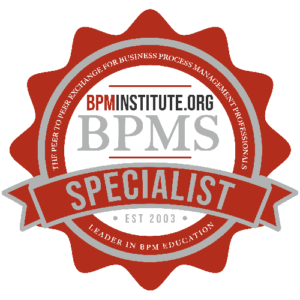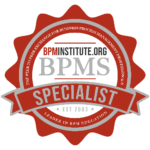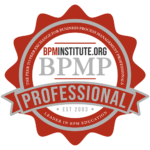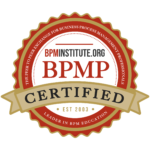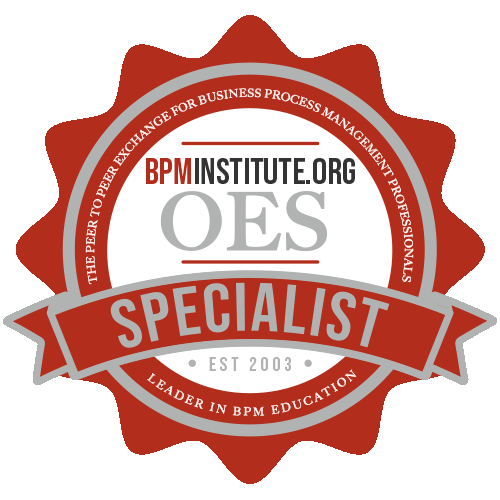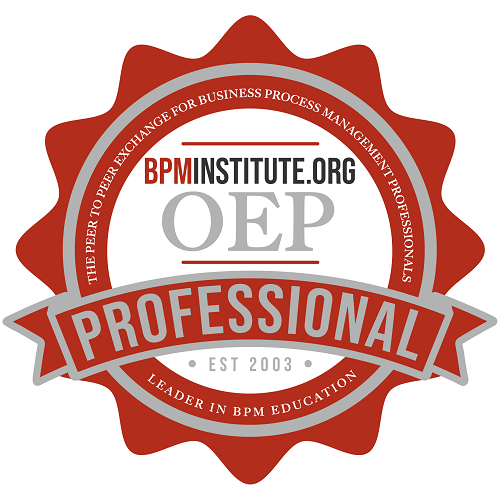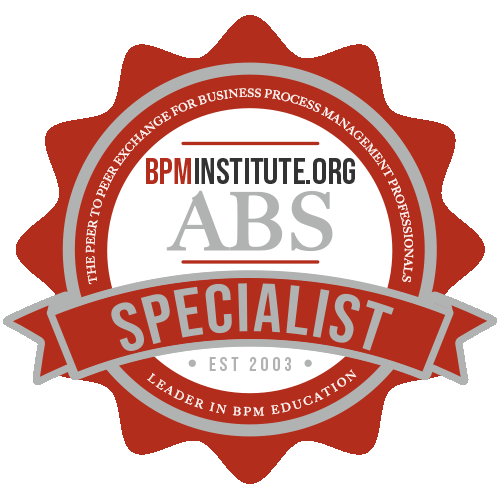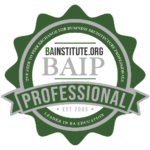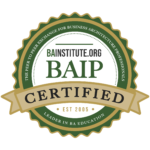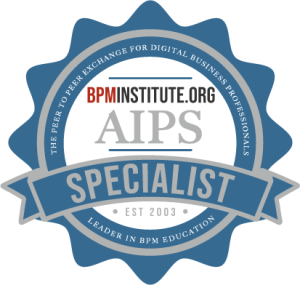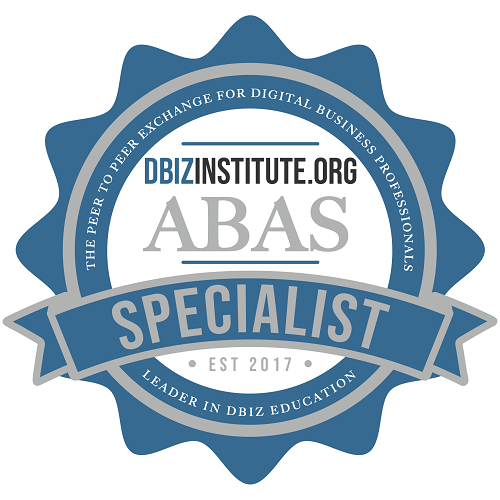In 2006 the Babson Process Management Research Center defined Strategic Alignment as the continual tight linkage of organizational priorities and enterprise processes, enabling achievement of business goals. Phrased differently this means linking strategy goals to operational goals and linking operational goals to process goals. This equates to defining a method for improving alignment among the organization’s performance measures, strategic plans, improvement projects, and budgets. It assumes that the organization employs a method for defining its business strategy such as a Balanced Scorecard (BSC). Using the BSC as an example one must first examine it to determine how BPM can be integrated into the BSC approach. BPM specifically focuses on improving the Internal Quadrant of the BSC. The Balanced Scorecard approach does the following:
- Mission, Vision, and Core Values are translated into desired Strategic Results. The organization’s “Pillars of Excellence”, or Strategic Themes, are selected to focus effort on the strategies that matter the most to success.
- Strategic Objectives are used to decompose strategy into actionable components that can be monitored using Performance Measures.
- Strategic Initiatives translate strategy into a set of high-priority projects that need to be implemented to ensure the success of strategy.
Once the strategic thinking and necessary actions are determined, annual program plans, projects and service level agreements can be developed and translated into budget requests.
WHAT STEPS ARE INVOLVED TO INTEGRATE BPM INTO BSC?
One must first assess the artifacts from the BSC. Questions to ask include:
- What are the Strategic Themes?
- Have cause and effect linkages been established? Are they adequately linked to process performance?
- What customer needs have been identified?
- What is the company’s stated value proposition?
One must then assess the BSC using criteria defined by the Balanced Scorecard Institute and add a process focus to the BSC. Examples of adding a process focus to the four quadrants in the BSC are:
- Financial
– Reduce costs
– Increase productivity - Customer
– Improve delivery
– Improve service quality
– Improve customer satisfaction - Internal
– Improve efficiency and effectiveness of the organization
– Create seamless end-to-end business processes to provide the required products and services - Learning and Growth
– Embed continuous process improvement in all the work
– Change the culture to foster process-thinking and collaboration
Next, you connect objectives from a bottom-up perspective (i.e. Learning & Growth to Internal to Customer to Financial) showing a cause-and-effect linkage. An example of a cause-and-effect linkage would be stated as follows.
“If we improve the skills of our operating employees, then we can achieve shorter cycle times and higher quality of our internal processes. If we reduce process cycle time and improve process quality, then we can improve the percentage of on-time delivery. If we improve the percentage of on-time delivery, then we can increase the number of loyal customers. If we increase the number of loyal customers, then we can increase the number of sales from repeat customers. If we increase the number of sales from repeat customers, then we can lower the cost of sales and increase the return on sales.”
Achieving a tight linkage requires one to focus on measures. One must identify business performance measures for both leading and lagging indicators. Then you should review benchmarking data, established baselines, and current business targets. Once that is done you map key business processes to the strategic objectives and measures. Mapping the objectives to business processes rather than to departments increases the process-focus and end-to-end process thinking. For those key business processes, establish process measures (time, quality, cost & productivity) for both leading and lagging indicators. You then align the business performance measures with process-level measures. This marks the end of the alignment effort.
Once the metrics are aligned at all levels, process improvement projects can be identified and one can oversee and assess the projects:
- Develop strategic initiatives with accountability throughout the organization
- If missing, implement automation software to govern the balanced scorecard system. Assuring the right information gets to the right people at the right time.
- Cascade the scorecard system down into the business units to actions that become tactical and operational.
- Evaluate completed scorecard by asking questions like: o Are our strategies working?
– Are we measuring the right things?
– Has our environment changed?
– Are we budgeting monies correctly?
SUMMARY
The challenge for realizing any business strategy is to cascade it deeply into an organization so that weekly and monthly operations support that strategy. One must also have a monthly review so that any deviations can be caught in time to make corrections. A process-focused business strategy enables one to achieve such a realization.




